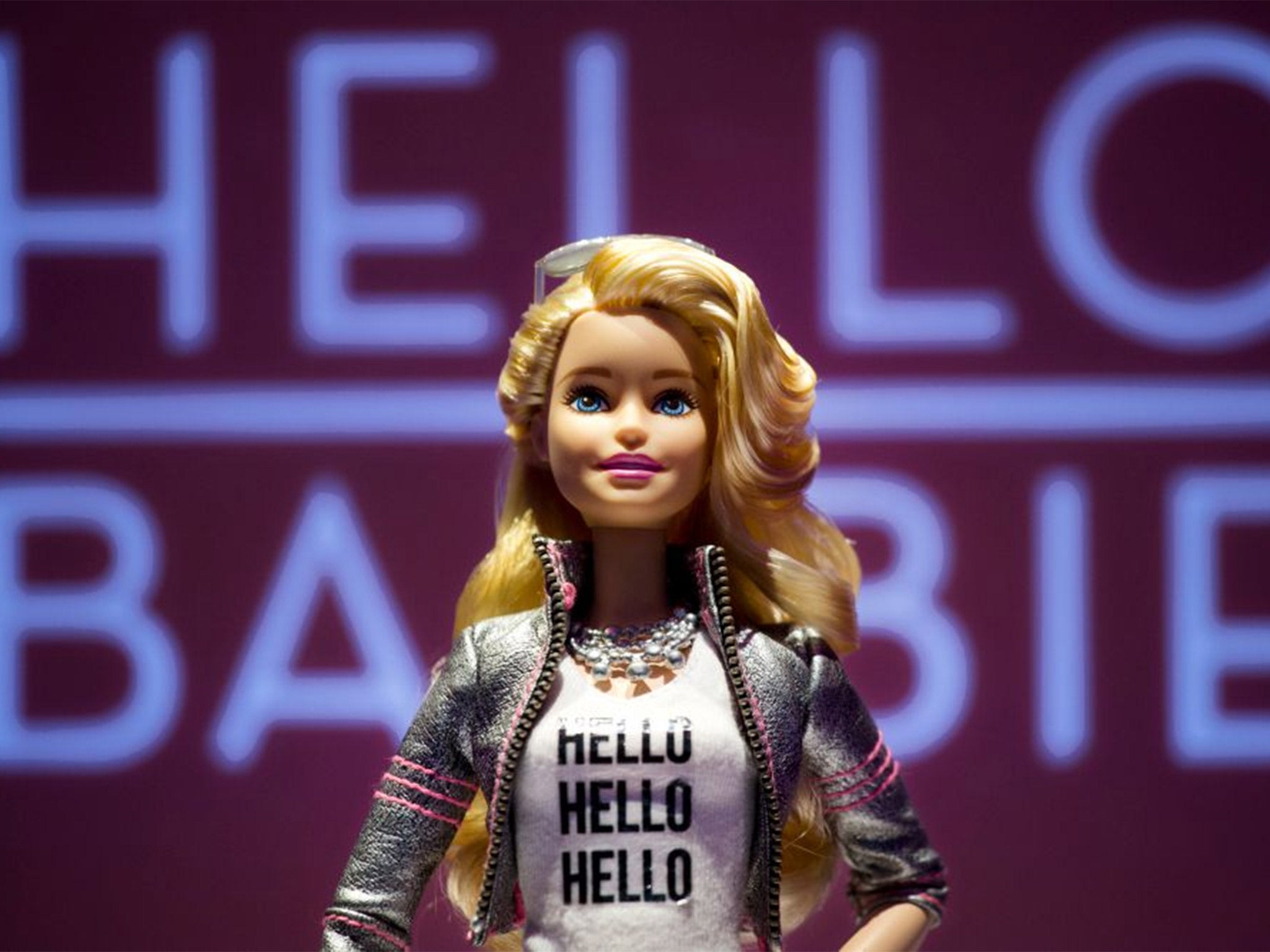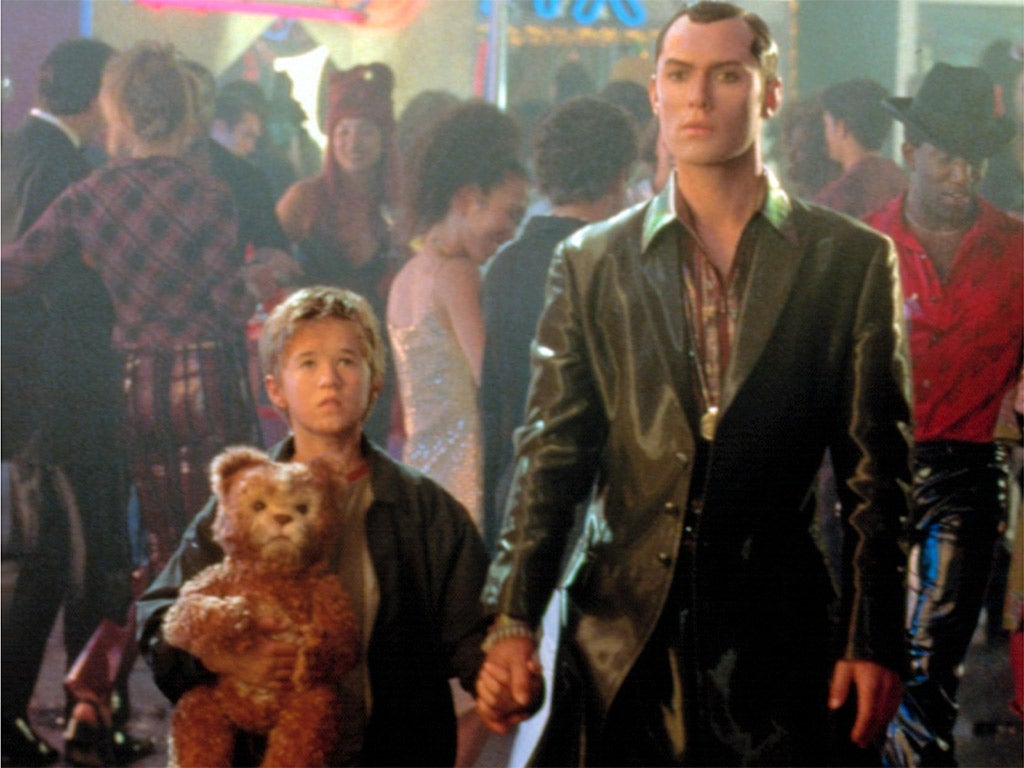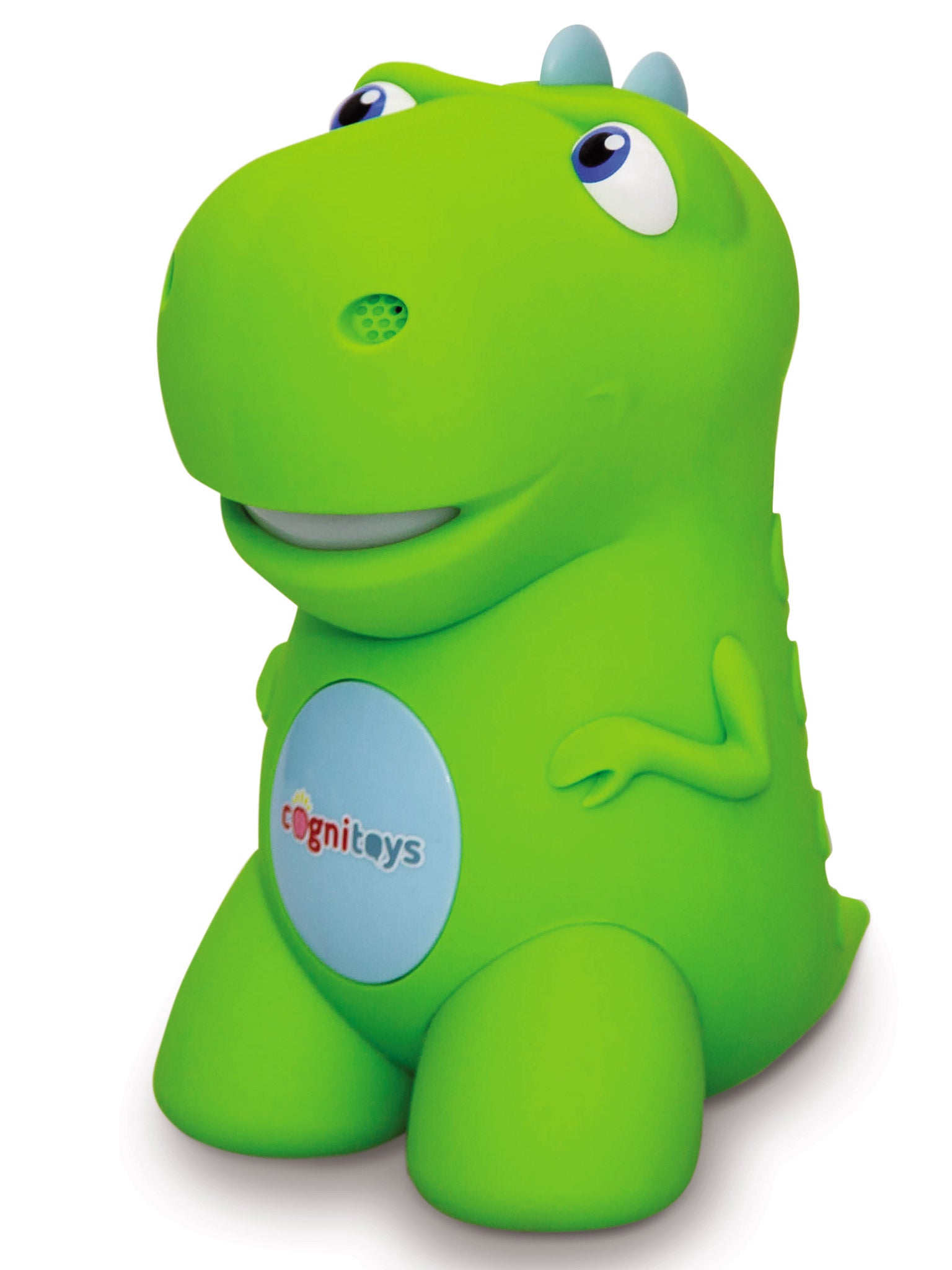AI-enabled toys: Hello Barbie is now connected to Wifi - and can chat back
In a world where technology is captivating the young, toy firms are falling over themselves to make artificial intelligence child's play

Your support helps us to tell the story
From reproductive rights to climate change to Big Tech, The Independent is on the ground when the story is developing. Whether it's investigating the financials of Elon Musk's pro-Trump PAC or producing our latest documentary, 'The A Word', which shines a light on the American women fighting for reproductive rights, we know how important it is to parse out the facts from the messaging.
At such a critical moment in US history, we need reporters on the ground. Your donation allows us to keep sending journalists to speak to both sides of the story.
The Independent is trusted by Americans across the entire political spectrum. And unlike many other quality news outlets, we choose not to lock Americans out of our reporting and analysis with paywalls. We believe quality journalism should be available to everyone, paid for by those who can afford it.
Your support makes all the difference.Artificial intelligence, which has already made inroads into fields ranging from medicine to aerospace engineering, could end up on Christmas lists this year. That's because several companies – including the industry behemoth Mattel – are planning to roll out an assortment of AI-enabled toys which are designed for children as young as three.
The one toy that everyone's been talking about, of course, is Mattel's Hello Barbie (its announcement hit British headlines earlier this year), which is powered by an artificial intelligence platform that was developed by ToyTalk, a San Francisco-based AI company founded by two former Pixar employees. The doll, expected to hit shelves in the US, will cost $74.99 (£49; there is no UK release date yet).
As the newest iteration of a doll that's been around since 1959, the Hello Barbie uses a combination of a microphone to record conversations, wi-fi to transfer those conversations to a computer server, voice-recognition software to figure out what the child just said, and an algorithm to determine what to say next to the child, who might range in age from three to nine. In some cases, the conversations with Hello Barbie can go as deep as 200 exchanges between child and doll.
A child might ask: "Want to play a game?" Hello Barbie then immediately accesses one of 8,000 possible responses to simulate the back-and-forth of a typical children's conversation. If the question can't be answered, there's a "fallback" response that's perfect for just about any situation – "Really? No way!"
In the world of AI, of course, this conversation between toy and child could be viewed as a sort of daily Turing Test. Unlike the classic Turing Test, however, the kids are not attempting to figure out whether Barbie is human or not – they are simply engaging in a conversation with a make-believe object imbued with consumer-grade AI. To make that possible, the Hello Barbie will remember conversational points from the past – it will remember if a child has brothers or sisters, for example, or when they last played together.
Taking a similar tack, the company Elemental Path is planning to roll out in December a $119.99 talking dinosaur for children as young as five that's powered by the cognitive computing capabilities of IBM Watson. The first set of questions and answers for the CogniToys Green Dino were generated by convening parent focus groups. However, since the dinosaur is connected to the cognitive computing capabilities of IBM Watson via wireless internet, it can learn in real-time and get answers to questions that might not have been programmed into the toy from the outset.
In the Kickstarter video for the CogniToys Green Dino, which raised $275,000 from more than 2,000 backers, you can see the power of partnering with IBM Watson. A child might ask, "How far is it to the moon?" or "What is the speed of light?" The Watson-powered AI engine processes the question – and here's the AI parlour trick – adapts the response to the age and development level of the child. Think of the dinosaur as a talking companion for your child – a companion who would also wipe the floor on Mastermind.

While there have been other "smart toys" before, there's something fundamentally different about the CogniToys Green Dino or the Hello Barbie. Using proprietary AI engines and speech-recognition tools, they are able to understand conversations, give intelligent responses and learn on the fly. These AI-powered companions can do more than just answer a series of simple questions with one-off replies, the way one might expect from Siri.
While you can split hairs about whether a real-time response from a plastic toy constitutes "intelligence" (the same debate that takes place every year about the Turing Test), it does seem that something fundamentally new is happening in the AI space. With these cognitive toys, researchers are creating a new category for objects that are less than human but more than machine.
According to MIT's Sherry Turkle, author of the new book Reclaiming Conversation: The Power of Talk in a Digital Age, we as a society are experiencing a "robotic moment". We no longer expect artificially intelligent machines to be fully human – as long as they can compensate in other ways. "It's not that we have really invented machines that love us or care about us in any way, shape or form," she says, "but that we are ready to believe that they do. We are ready to play their game."
AI-enabled toys such as Hello Barbie or the CogniToys Green Dino promise to play that game. And similar types of AI toys could become even more realistic as they go beyond just speech recognition to involve sophisticated sensors capable of understanding specific gestures. In May, for example, Google published a patent for an internet-connected teddy bear hooked up with sensors, cameras, microphones and a wireless internet connection. In the patent, Google suggests the robotic teddy bear might be able to control a home environment.
To see how gesture-sensing technology might be combined with AI to simulate real-world behaviours, check out the MiPosaur, unveiled by WowWee toys at the beginning of the year. A YouTube video produced for Toy Fair New York in February shows how these robotic dinosaurs can go into "gesture mode" or "leash mode" or "food mode" and respond to the gestures of a human hand or an interactive tracking ball, simulating the types of behaviours that you might expect from a well-trained pet.
Of course, just because these are "toys" doesn't mean that there aren't some serious issues to consider. The Hello Barbie toy, for example, has already attracted the negative attention of privacy advocates, who claim that the toy violates the right to privacy for children under the age of 13 (something that ToyTalk and Mattel clearly disagree with). And the Google teddy bear immediately attracted attention from the BBC as a "creepy internet toy" and comparisons to the "super" teddy bear in AI, the Steven Spielberg film from 2001.

And that's not all. As with any object hooked up to the internet these days, there's always the chance of getting hacked. Play experts, too, have weighed in, claiming that these "smart toys" may actually be bad for children. They claim that these artificially intelligent toys could reduce imaginative play and even inspire a number of negative behavioural patterns in children.
If AI toys are ever going to catch on, toy companies are clearly going to have to overcome the "creepiness" factor of toys recording and analysing the conversations of children. These consumer-grade AI toys are not "creepy" because they could destroy the world – as Elon Musk or Stephen Hawking might argue about enterprise-grade AI – but because they have the potential to fundamentally change the nature of how we interact with people and objects around us.
These toys are essentially deconstructing everything that makes humans special – and replacing it with sensors, computer servers, software and algorithms. This Christmas, we might find out what the world's toughest critics – our kids – have to say about that.
© The Washington Post
Join our commenting forum
Join thought-provoking conversations, follow other Independent readers and see their replies
Comments